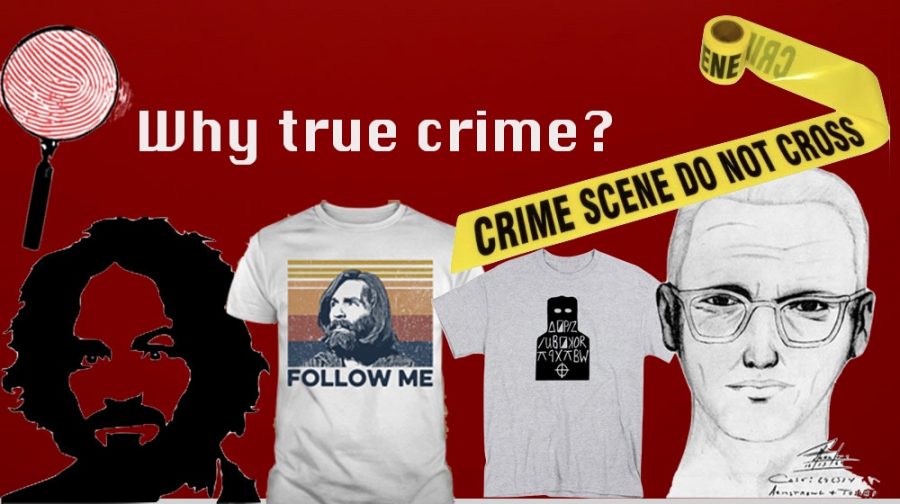A Criminal Cash-Grab
How true crime turns traumatizing experiences into a profitable form of entertainment
Photo illustration by L. Chandler
The fascination with true crime leads to questionable merchandise based around notorious killers.
December 1, 2021
Whether it’s listening to a podcast on the way to work or binge watching the newest docuseries on Netflix, true crime is readily available to entertain the public with just one click. However, most people often don’t know what attracts them to the gory, frightening side of the human psyche.
In a study by psychotherapist Kathleen Check, true crime allows for escapism, and it creates a feeling of safety in knowing what the worst that’s out there is and how to avoid it. She attempted to find the origin of the fascination with true crime by collecting data from her patients.
“Tuning in and following the specifics of a crime also creates a [false] sense being able to ‘see inside’ the mind of a criminal, thus creating a psychological protective barrier: ‘If I know how criminals operate, I can protect myself,’” Check said.
The interaction between the victims, their families and the criminals themselves is becoming questionable. Viewers, as seen with the recent Gabby Petito case, are starting to become involved in these investigations, thus publicizing them. While this can seem like a good idea in theory, it can potentially throw off the entire investigation. In the infamous Nightstalker case in 1984, the police noticed a common shoeprint on the different crime scenes. It was this shoeprint that eventually led to the arrest of Richard Ramirez who had committed 13 murders, five attempted murders, 11 sexual assaults and 14 burglaries. Had the public known about this, theoretically, Ramirez could’ve simply changed shoes and more people could have been killed.
The sharing of evidence by the public can also benefit the case. With the Petito case, sharing information led to more publicity and the eventual conclusion of the case. This discussion about current cases allows older, unsolved cases to be brought up and potentially allows the families a better sense of closure.
Lily Hayes (12) understood the public’s involvement with the Petito case as a good decision and supports communities aiding in future investigations.
“I definitely think that the public should have spread as much information as they did because not only did it help officers eventually find a body,” Hayes said. “It also brought this case to their attention which I think needs to be done more because many murders and kidnappings go unsolved and put at the bottom of the stack which isn’t fair to the families of those involved.”
Viewers also have delved down a questionable path when it comes to true crime merchandise. A simple search on the craft site Etsy or on Amazon can lead consumers to merchandise for their “favorite” serial killer. Shirts with Ted Bundy’s face aren’t a rare sight on either of these sites.
Many question the ethicality behind purchasing and supporting shirts romanticizing the reality of the crimes these people committed. Bethany Everett (12), a true crime consumer, doesn’t fully understand the desire for this merchandise.
“I don’t think I would personally buy true crime merch, nor do I think it’s the most amazing idea to buy a hoodie with the Zodiac Killer on it, but I’m not one to judge someone for their interests,” Everett said.




